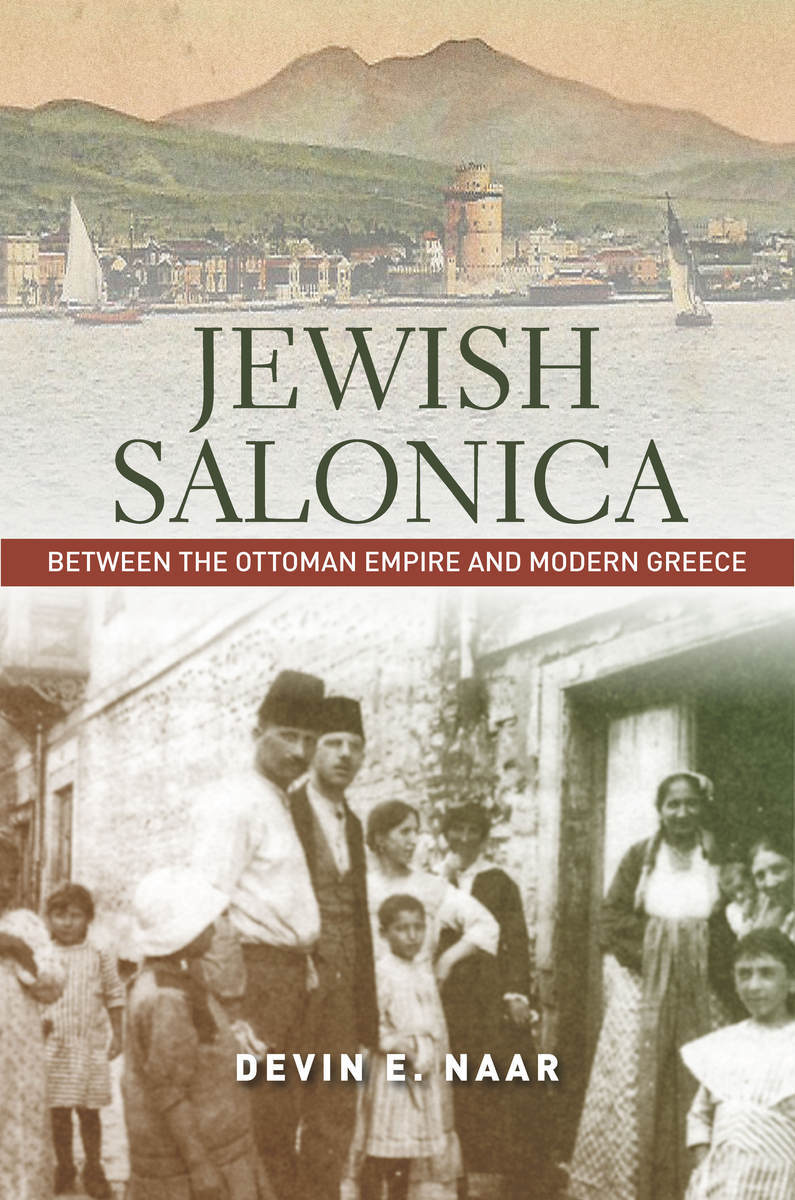Jewish Salonica and the Greek Nation
Episode 314
hosted by Nir Shafir and Oscar Aguirre-Mandujano
Salonica was home to one of the largest Jewish communities in the Ottoman and post-Ottoman world until its liquidation by the Nazis in 1943. Historians often mark the beginning of the end of the Jewish community in 1913 when the city was annexed by Greece. Devin Naar challenges this presumption in this podcast by looking at how the Jewish community continued to flourish and adapt as part of the new Greek nation-state. Ultimately, the community was both sustained and limited by its continued use of the millet structure from the late nineteenth-century Ottoman Empire and its strong attachment to the city as a political space. As such, the interwar history of the Salonican Jews becomes an important study of the legacies of the Ottoman Empire and the types of politics it continued to create well into the twentieth century.
Stream via SoundCloud
Contributor Bios
 |
Devin E. Naar is the Isaac Alhadeff Professor in Sephardic Studies and Associate Professor of Jewish Studies and History at the University of Washington in Seattle, where he directs the Sephardic Studies Program. Naar received his PhD in History from Stanford University, served as a Fulbright Scholar in Greece, and sits on the Academic Advisory Council of Center for Jewish History in New York. |
 |
Nir Shafir is a historian of the Middle East whose research examines the intersections of knowledge production, religious practice, and material culture in the early modern world. He curates Ottoman History Podcast’s series on history of science in addition to being one of the co-founders of hazine.info, a website that explores the archives and libraries of the Islamic world. He is an assistant professor of history at UCSD.
|
 |
Oscar Aguirre-Mandujano is a PhD candidate in Near and Middle Eastern Studies at the University of Washington. His dissertation explores how Ottoman intellectuals and bureaucrats in the 14th and 15th centuries provided models for social and political behavior through the creation of a new literary and poetic language. |
Recommended Episodes
 |
Cengiz Şişman | #308
3/27/17
|
Sabbatai Sevi and the Ottoman-Turkish Dönmes | |
 |
Sarah Stein | #177
10/31/14
|
Saharan Jews in French Algeria | |
 |
Sotirios Dimitriadis | #094
2/23/13
|
Salonica in the Age of Ports | |
 |
Alma Heckman | #126
10/17/13
|
Jewish Citizens on Exhibit |
Credits
Episode No. 314
Release Date: 19 May 2017
Recording Location: University of Washington
Audio editing by Chris Gratien
Music: Katibim (Uskudar'a Gider iken) - Safiye Ayla
Special thanks to Kara Güneş for permission to use the composition "Istanbul"
Images and bibliography courtesy of Devin Naar
Release Date: 19 May 2017
Recording Location: University of Washington
Audio editing by Chris Gratien
Music: Katibim (Uskudar'a Gider iken) - Safiye Ayla
Special thanks to Kara Güneş for permission to use the composition "Istanbul"
Images and bibliography courtesy of Devin Naar
Images
 |
| A Jewish man reading a newspaper in one of Salonica's public squares to a group of other Jewish men, all dressed in traditional Ottoman Jewish attire. Remarkably, the photo appeared in National Geographic in 1916, several years after Salonica had already become part of Greece. The photo illustrates that collective reading practices--as well as clothing--associated with the Ottoman world continued into the Greek state. Source: http://www.greece-is.com/ |
 |
| Photo of the Mair Aboav orphanage for Jewish girls, 1926, one of the more than twenty institutions managed by the Jewish Community of Salonica during the interwar years. The photo demonstrates the multiple threads of cultural, linguistic, and religious affiliation expressed by Salonica's Jews during the interwar year: Jewish and specifically Sephardic, Greek and European, but specifically Salonican. Source: Jewish Museum of Thessaloniki; courtesy of Devin Naar. For more see Naar, Jewish Salonica, pp. pp. 141-142. |
Select Bibliography
 |
| Jewish Salonica by Devin Naar Stanford University Press |
K. E. Fleming, Greece-A Jewish History (Princeton, 2008).
Eyal Ginio, ed., Greece: Jewish Communities in the East in the Nineteenth and Twentieth Centuries (Jerusalem, 2014) [Hebrew].
Mark Mazower, Salonica, City of Ghosts: Christians, Muslims, and Jews, 1430–1950 (London, 2004).
Rena Molho, Oi Evraioi tēs Thessalonikēs 1856–1919: Mia Idiaiterē Koinotēta (Athens, 2001).
Devin E. Naar, "'The Mother of Israel' or the 'Sephardic Metropolis'?: Sephardim, Ashkenazim, and Romaniotes in Salonica," Jewish Social Studies 22, no. 1 (Fall 2016): 81-129.
Julia Phillips Cohen and Sarah Abrevaya Stein, eds., Sephardi Lives: A Documentary History (Stanford, 2014).
Bernard Pierron, Juifs et Chrétiens de la Grèce Moderne: Histoire des relations intercommunautaires de 1821 à 1945 (Paris, 1996).
Aron Rodrigue and Sarah Abrevaya Stein, eds., A Jewish Voice from Ottoman Salonica: The Ladino Memoir of Sa’adi Besalel a-Levi (Palo Alto, 2012).










Comments
Post a Comment
Due to an overwhelming amount of spam, we no longer read comments submitted to the blog.